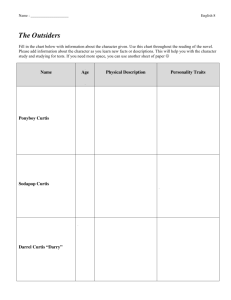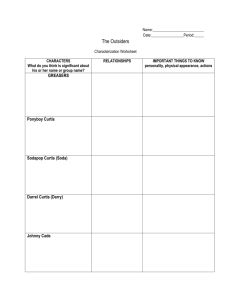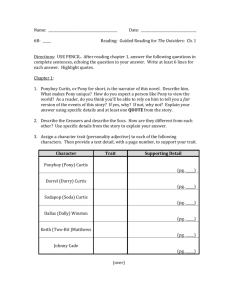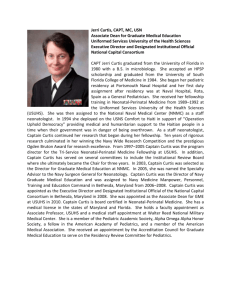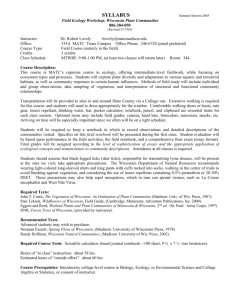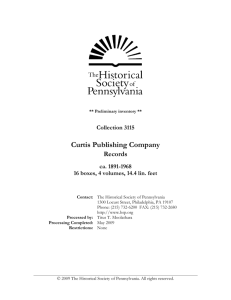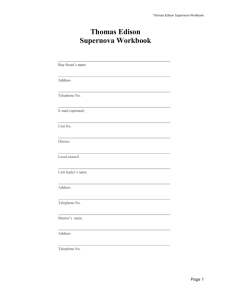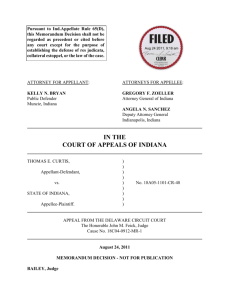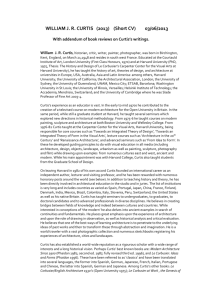It's about the Client Experience: Ten Reasons to Embrace Supernova
advertisement
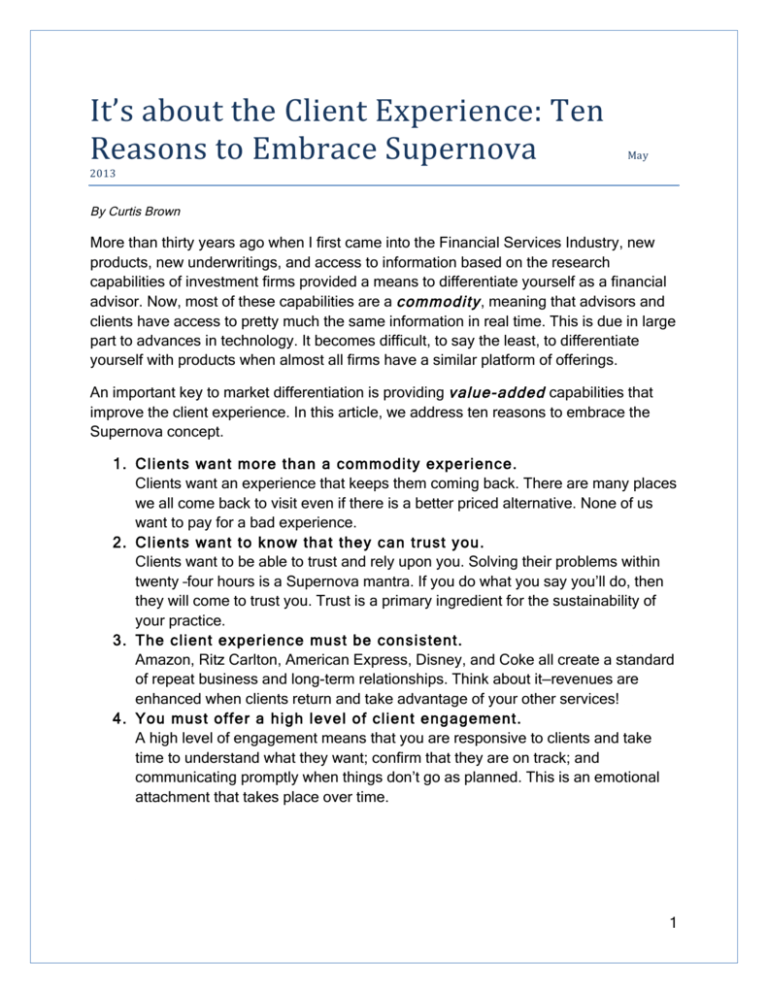
It’s about the Client Experience: Ten Reasons to Embrace Supernova M ay 2013 By Curtis Brown More than thirty years ago when I first came into the Financial Services Industry, new products, new underwritings, and access to information based on the research capabilities of investment firms provided a means to differentiate yourself as a financial advisor. Now, most of these capabilities are a commodity , meaning that advisors and clients have access to pretty much the same information in real time. This is due in large part to advances in technology. It becomes difficult, to say the least, to differentiate yourself with products when almost all firms have a similar platform of offerings. An important key to market differentiation is providing value-added capabilities that improve the client experience. In this article, we address ten reasons to embrace the Supernova concept. 1. Clients want more than a commodity experience. Clients want an experience that keeps them coming back. There are many places we all come back to visit even if there is a better priced alternative. None of us want to pay for a bad experience. 2. Clients want to know that they can trust you. Clients want to be able to trust and rely upon you. Solving their problems within twenty –four hours is a Supernova mantra. If you do what you say you’ll do, then they will come to trust you. Trust is a primary ingredient for the sustainability of your practice. 3. The client experience must be consistent. Amazon, Ritz Carlton, American Express, Disney, and Coke all create a standard of repeat business and long-term relationships. Think about it—revenues are enhanced when clients return and take advantage of your other services! 4. You must offer a high level of client engagement. A high level of engagement means that you are responsive to clients and take time to understand what they want; confirm that they are on track; and communicating promptly when things don’t go as planned. This is an emotional attachment that takes place over time. 1 5. Clients are people with real emotions; therefore the experience must be on an emotional level. “Behavioral psychologists have long argued that only 30% of human decisions and behaviors are actually driven by rational considerations. This means that more than 70% of consumer loyalty and spending decisions are based on emotional factors”.1 6. A positive client experience must be deliberate and cannot happen by accident. Creating a positive client experience must be part of your overall strategy for your business. You can plan for increasing assets, revenue per relationship, define the most appropriate product or service, but you must incorporate a plan for an overall positive client experience. This cannot happen by accident. 7. The customer experience must deliver value, be easy, noncomplicated, and enjoyable. Deliver value, make it easy to do business with you, and make it an enjoyable experience. 8. Meet, set, and define client expectations in order to create a positive interactive experience. A positive Experience = Loyalty. FAs must take a leadership role and walk the client through a discovery process, set and define expectations. This experience creates loyalty and contributes to the sustainability of your practice. 9. Improve the client experience as a competitive differentiator. There are two areas that can be a commodity (meaning you can get it anywhere). One is products or services, and the other is information. Your value is positively impacted by understanding how the information impacts the client positively or negatively. If you improve the client experience you can distance yourself from other competitors. We deliver a comprehensive client experience that includes multi-generational planning and full implementation of the plan through 12-4-2 (interacting with the clients a minimum of once a month with four of those contacts being reviews and two of those reviews being in person meetings) and rapid response to the client's concerns (one-hour response, 24 hour resolution). 10. Listen to your clients and their needs. 1 http://www.circles.com/docs/CE%20Whitepaper_Engagement_071410.pdf 2 A disgruntled consumer will tell between 9 and 15 people about their experience. About 13% of disgruntled customers tell more than 20 people.2 It takes 12 positive service experiences to make up for one negative experience.3 At the end of the day, one must ask, “did I deliver an unforgettable positive client experience?” There will be more to come on the subject of delivering a “memorable client experience”. About the Author Curtis C. Brown, Jr. is a consultant with Supernova Consulting. He is an entrepreneur and the former President/COO of EQIS, a Financial Services Technology firm. Curtis spent 30 years with Merrill Lynch in a variety of leadership positions. Previously he was, a Regional Managing Director responsible for four business units including a Private Client business, Private Wealth business Asia Pacific business, and Middle Market Institutional business; National Sales Manager, and Assistant to the Chairman and President. Curtis spent the early part of his career as a financial advisor. He holds an MBA degree from National University, a BA degree in Political Science from San Diego State University. Curtis also attended an advanced leadership development program at Wharton and the Investment Banking Institute. He studied Spanish at Bridge-Liguetec in Buenos Aires, Argentina. 2 3 Source: White House Office of Consumer Affairs, Washington, DC Source: “Understanding Customers” by Ruby Newell-Legner 3
